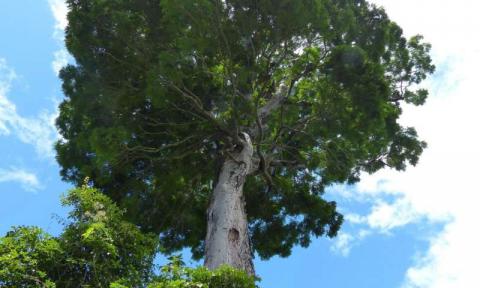
By Gwilym Lewis
Kew scientists, in collaboration with researchers from Brazil and Canada, have recently published a description of a new tree species from the legume family (Leguminosae or Fabaceae). Dinizia jueirana-facao G.P. Lewis & G.S. Siqueira, discovered in Brazil, grows to a whopping 40 metres with an estimated weight of up to 62 tonnes.
Dinizia jueirana-facao grows in a narrowly restricted area of Atlantic forest in the Brazilian state of Espirito Santo. It is Critically Endangered – we know of only 25 of these trees in the whole world - a fact which helps to explain why such a majestic species has gone undiscovered and scientifically unnamed for so long. If such gigantic species are being described as new to science in the 21st century, just imagine how many smaller organisms are still waiting to be discovered?
Of the 2,000 new plant species described and published each year by the global botanical community, Kew taxonomists contribute about 200, or around 10 per cent. It's noteworthy, however, that many of these newly described plants are not based on brand new field discoveries, but rather on new scientific evidence (usually molecular). This could indicate that a plant was originally placed in the wrong genus, or that a large genus needs to be segregated into smaller natural groups or, conversely, smaller genera should be combined. All these taxonomic changes have nomenclatural consequences. Plants (and animals) do sometimes have to change name. Taxonomy is dynamic. On the other hand, several newly described species, and even a few genera, are based on previously unnamed specimens. These have either been recently collected on botanical field expeditions or rediscovered as historical specimens preserved in herbaria.

